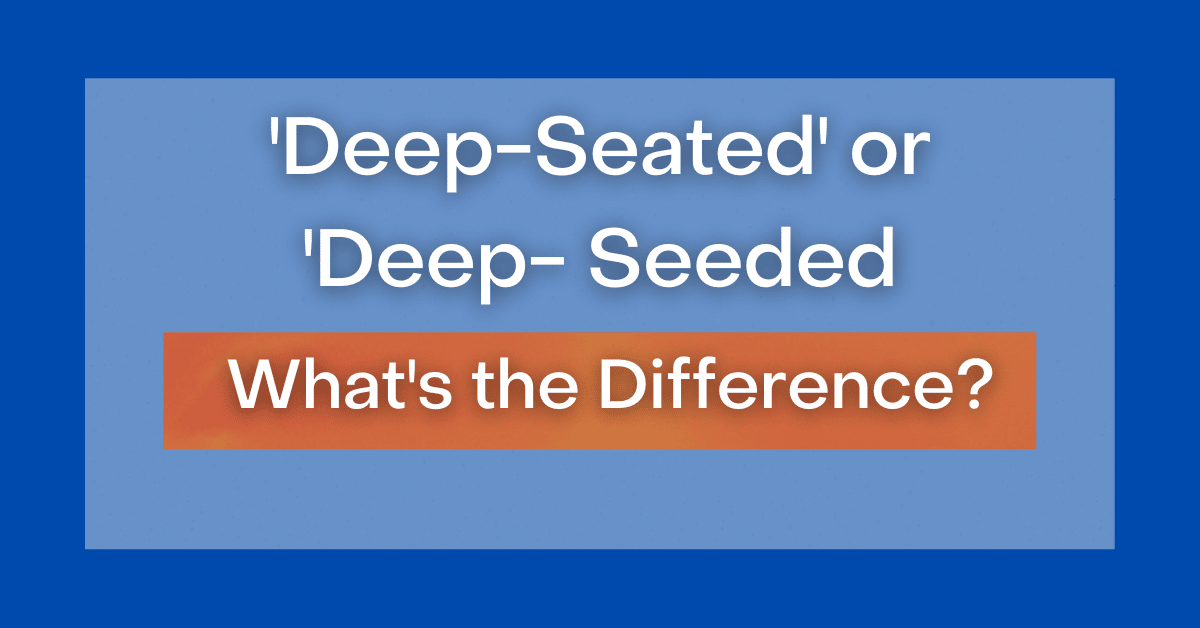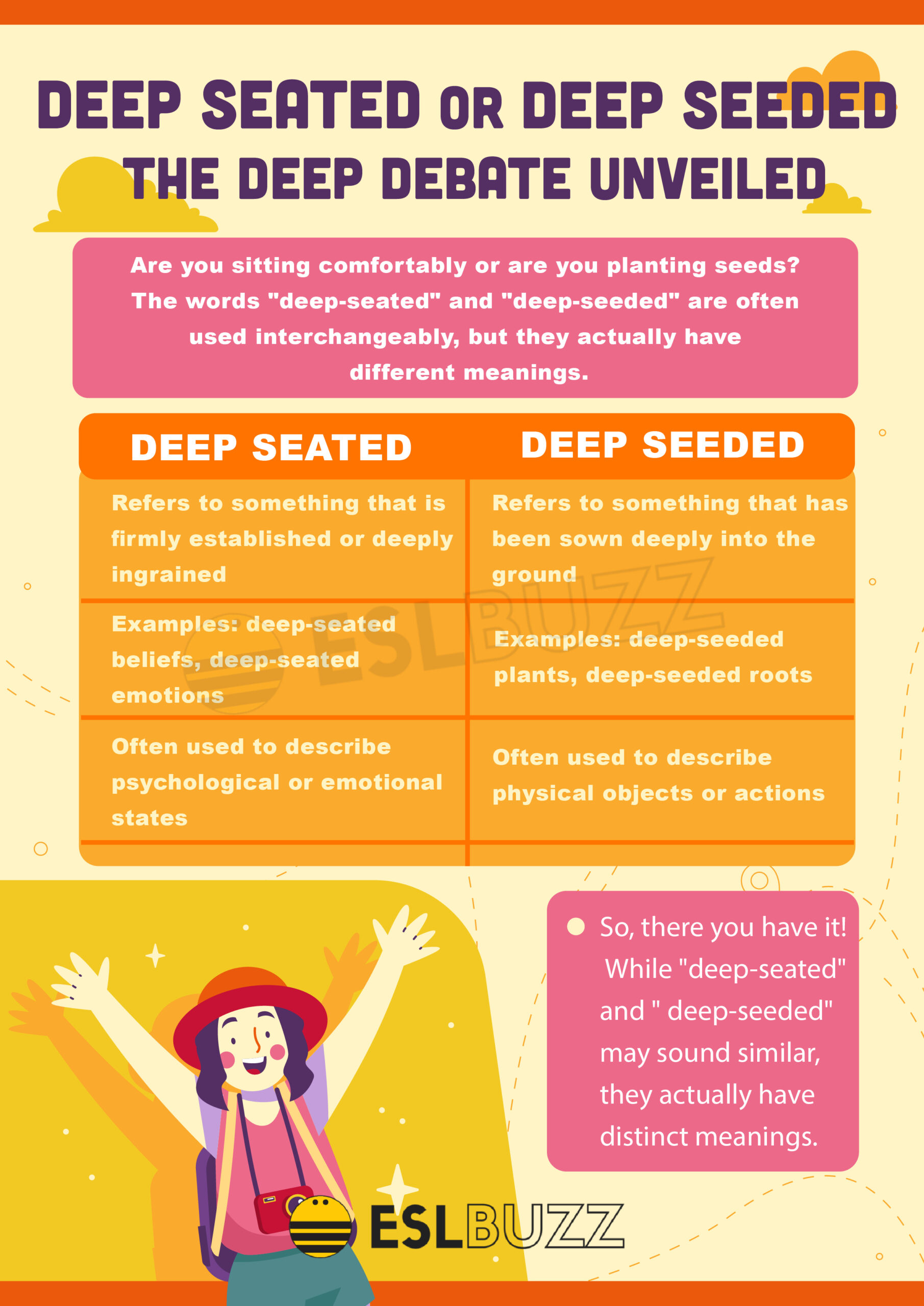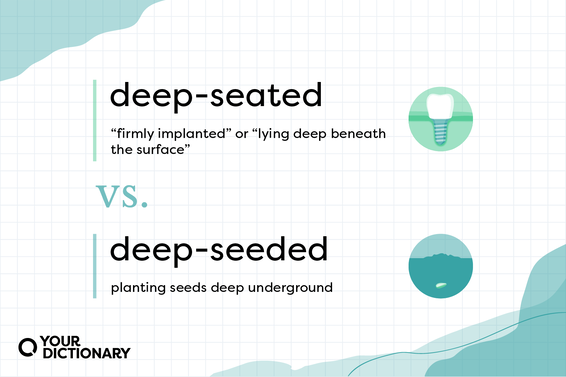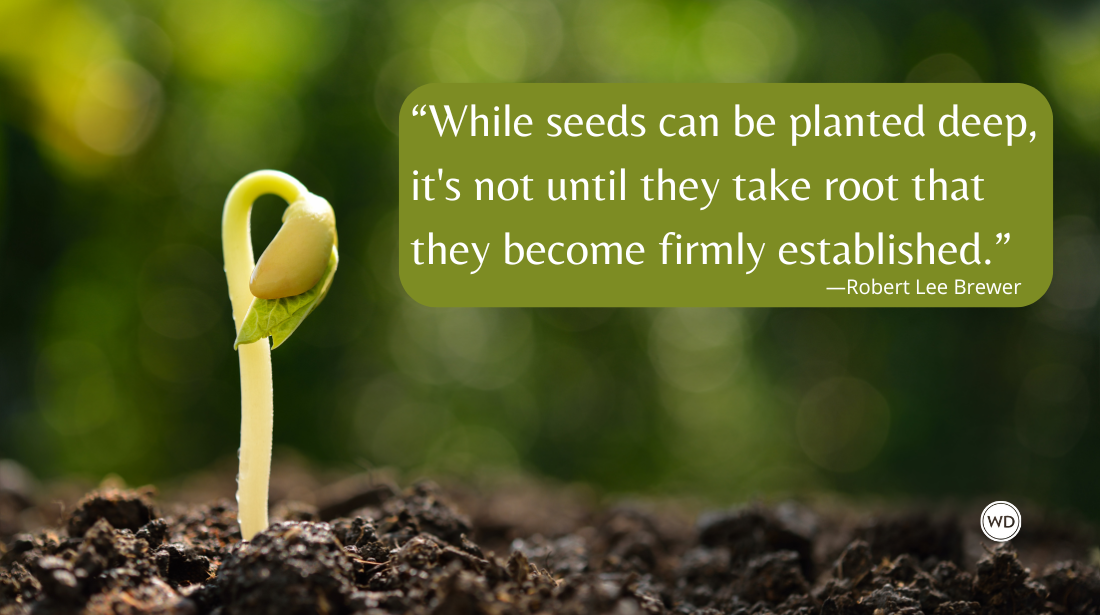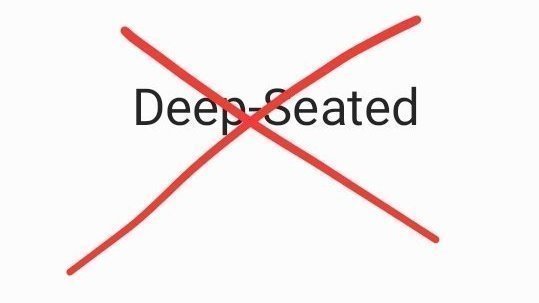Is It Deep Seated Or Deep Seeded

The nuances of the English language often present tricky choices, and the proper usage of "deep-seated" versus "deep-seeded" is no exception. While both phrases evoke a sense of something being firmly established, their origins and correct applications differ significantly, leading to common errors in writing and speech. This article will delve into the etymology, meaning, and appropriate contexts for each term, helping to clarify the distinction and promote more precise communication.
At the heart of this linguistic debate lies the concept of correct word choice. Understanding the difference between "deep-seated" and "deep-seeded" is crucial for effective communication. Using the wrong phrase can not only detract from the clarity of your message but also raise questions about your command of the English language.
The Meaning of Deep-Seated
The correct phrase is "deep-seated," not "deep-seeded." Deep-seated refers to something that is firmly established or deeply ingrained, often used to describe emotions, beliefs, or problems.
The term draws its imagery from the idea of roots that run deep within the ground. The Oxford English Dictionary defines "deep-seated" as "firmly established; deeply ingrained."
For example, you might say someone has deep-seated prejudices or that a company has deep-seated financial problems. The focus is on the enduring and entrenched nature of the thing being described.
Examples of Deep-Seated Usage
Consider the following sentences using "deep-seated" correctly: "Her deep-seated fear of public speaking prevented her from advancing in her career." "The country's deep-seated political divisions made it difficult to achieve consensus." These examples highlight how "deep-seated" describes something profound and difficult to change.
The (Mis)Use of Deep-Seeded
The phrase "deep-seeded" is generally considered incorrect in most contexts. While "seeded" relates to planting seeds, it doesn't translate well to describing abstract concepts like emotions or problems.
However, in very specific, literal contexts involving agriculture or horticulture, the phrase could theoretically be used, albeit rarely. For example, one might describe a plant whose roots are unusually deep-seeded but even in these cases, it is better to use deep-rooted.
The confusion likely arises from the similar sound of the two words and the general understanding that seeds are planted deep within the earth. But, in standard English usage, "deep-seeded" is not the correct idiom for describing something deeply ingrained.
Why the Confusion?
The similarity in sound and the association of seeds with depth and growth probably explain why "deep-seeded" is sometimes used incorrectly. Many people might intuitively feel that "deep-seeded" conveys the right meaning. This is likely due to the mental image of something being planted firmly and growing from a deep root.
However, language evolves through established usage, and the correct form, supported by dictionaries and style guides, remains "deep-seated." The misuse of "deep-seeded" often occurs in casual conversation. This may lead to a widespread misconception, especially among those less familiar with proper grammar and idiom.
Impact of Correct Usage
Using "deep-seated" correctly enhances the clarity and credibility of your communication. Precision in language reflects attention to detail and a respect for the nuances of the English language.
In professional settings, accurate language use is crucial for effective communication. Misusing common phrases like "deep-seated" can create a negative impression. Using the right language can improve how the public perceives the subject matter.
For non-native speakers, mastering the correct usage of idioms like "deep-seated" is essential for demonstrating proficiency in English. Correct use of English demonstrates confidence.
How to Remember the Difference
A simple trick to remember the correct usage is to associate "deep-seated" with "seat," as in a chair or throne. Think of something firmly seated or established, like a belief or a problem. This mental connection can help you recall that the correct phrase is "deep-seated," not "deep-seeded."
Another helpful method is to actively practice using the phrase in different contexts. Write sentences or engage in conversations that require you to use the term correctly. Repetition reinforces the correct usage and helps prevent errors.
Pay attention to how the phrase is used in reputable sources, such as books, newspapers, and academic articles. Exposure to correct usage helps solidify your understanding and reinforces the right context.
Conclusion
The distinction between "deep-seated" and "deep-seeded" may seem minor, but it underscores the importance of precision in language. While "deep-seeded" might occasionally appear in literal agricultural contexts, "deep-seated" is the correct idiom for describing deeply ingrained emotions, beliefs, or problems.
By understanding the etymology and appropriate usage of each term, individuals can enhance their communication skills and avoid common linguistic errors. Ultimately, mastering these nuances contributes to clearer, more effective communication in both personal and professional settings.
Therefore, next time you're tempted to say "deep-seeded," remember that the phrase you're looking for is almost certainly "deep-seated." Proper language and usage is key to success.
